
Before saying anything about film or game making, before even asking Immortality's director Sam Barlow how he actually feels about the term 'interactive movie,' there's one question we find more pressing: what's a Half Mermaid anyway? Barlow jokes, "Wow, that's our 45 minutes gone," before offering what he calls a "comprehensive short answer."
Barlow self-published 2015's Her Story on PC, but for his next game, Telling Lies (which debuted on PC in 2019 before coming to PS4 in 2020), he was told he needed to create a business entity to contain things – a production company, essentially. Tasked with creating a list of fairly unique names on a tight deadline, Barlow borrowed one of these from "a theoretical screenplay I have not written but would love to write."
Called 'Drowning A Mermaid,' the pitch sees master of suspense Alfred Hitchcock collaborating with a legendary blonde actress he never worked with in real life. "Esther Williams is someone I'm obsessed with," Barlow says.
Both an accomplished actress and a competitive swimmer, Esther Williams was known as MGM's Million Dollar Mermaid, and starred in numerous aqua-musical roles throughout the '40s and '50s. In Barlow's film history fairy tale, Hitchcock "wants to create the world's most technologically advanced, clever drowning sequence" with Williams in the starring role. Alas, an influx of pictures about Hitchcock in recent years has led Barlow to put this idea on the back burner.
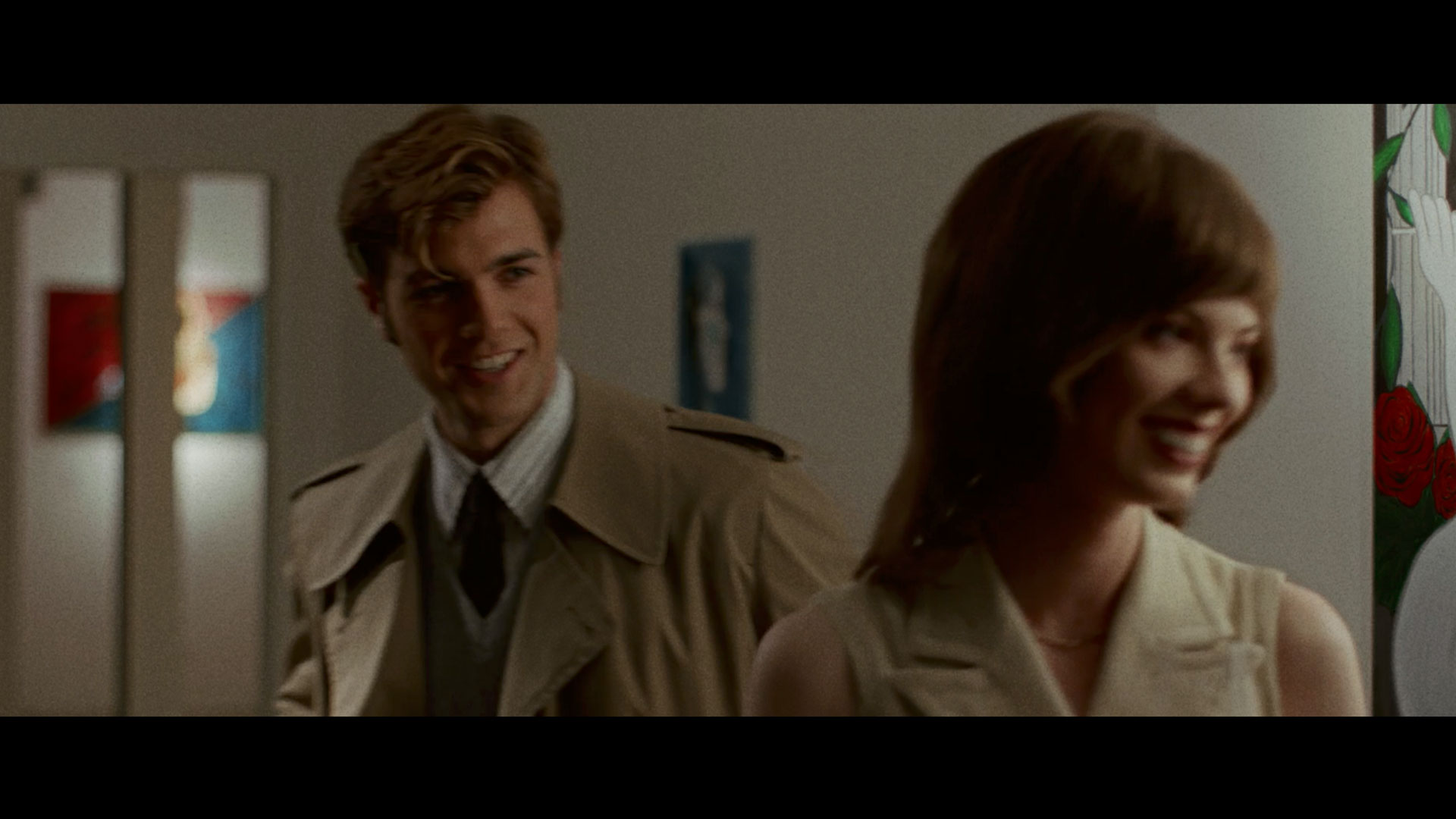
He laughs, explaining, "I was like, 'Argh! No-one's gonna want my Hitchcock movie – I have to wait 20 years before I can do this again.'" Nonetheless 'Drowning A Mermaid' still became the business entity that released Telling Lies, though it needed to be amended for Immortality. "Without me there to explain what 'Drowning A Mermaid' meant… Our brief amounts of research were like, 'This might be a scary name to people, and sound somewhat violent,'" Barlow tells us. Hence, the studio became 'Half Mermaid'… which still sounds a bit like the result of some offscreen violence to us.
Barlow, however, offers a different train of thought: "There was something appealing about the nonsense of 'What is half a mermaid?' Well, if you pick the human part, we're all half-mermaid!"
Lost in sea foam

It's a deep well to draw from. Just for starters, confines of category ('What is half a mermaid?') haunt projects that are playable but lean on live-action footage; we still can't quite escape distracting questions like 'Are they really games, though?'
"People kept calling these things 'interactive movies,'" Barlow says, reflecting on his earlier work, "and I was like, 'Yeah, they're not really, but okay. Let's do it. Let's do it. Let's make an interactive movie!'"
Barlow also tells us, "Immortality, in some ways, was me digging into [the 'Drowning A Mermaid'] idea of […] creating a fictional Hitchcock-type figure and the interplay between him and this actress that have different trajectories."
Immortality and the studio's namesake share many of the same threads: a film history fairytale about supposedly lost flicks, a Hitchcockian director a little too keen to mould their actress's story, and, of course, death by a force of nature.
Fiery imagery is core to so much of Immortality's visual identity that it's easy to gloss over a clip from Two Of Everything, the final film of fictitious actress Marissa Marcel (played by the very real Manon Gage), where a staged drowning nearly becomes a real one.
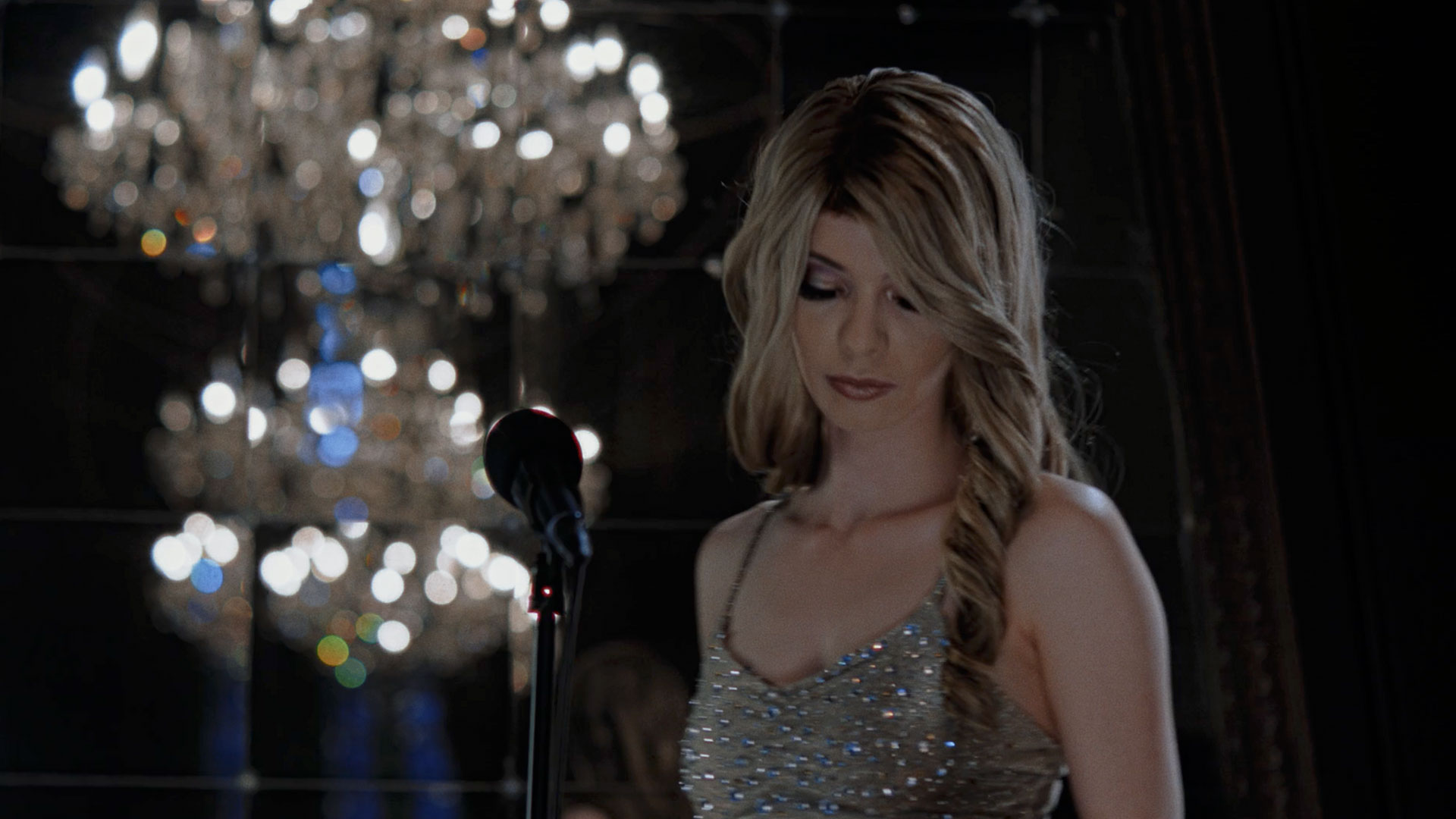
"My 13-year-old pointed out – this isn't a huge spoiler – that every single game I've ever made involves watery death or strange, watery imagery," Barlow shares, "and they were like, 'What is it with you, Dad? Like, what? Did you, like, almost drown when you were young?'"
'Drowning' too is an apt metaphor for what actually happened to Marissa Marcel: she lost herself among the crashing waves of a vast, nigh-unknowable entity. But before we engage spoiler mode and speak about all of that, let's respool the reel a bit.
Marissa Marcel's casting in her first film, 1968 monksploitation-meets-noir flick Ambrosio, is inspired by actress Jean Seberg's early career. An unknown talent, Seberg was selected from thousands of hopefuls for the leading role in Otto Preminger's 1957 film Saint Joan. Her experience working with Preminger was fraught, and when the picture premiered, critics were merciless about her inexperienced performance. Though Seberg went on to star in landmark pictures such as 1960 French New Wave crime drama Breathless, her story ends tragically.
This rise and ruin is an all-too-familiar arc throughout cinema history – to say nothing of how Hitchcock infamously terrorised actress Tippi Hedren both on and off camera. Immortality arguably attempts to tell a different story, one about the transformation from artist's subject to author of one's own destiny.
Rewriting history
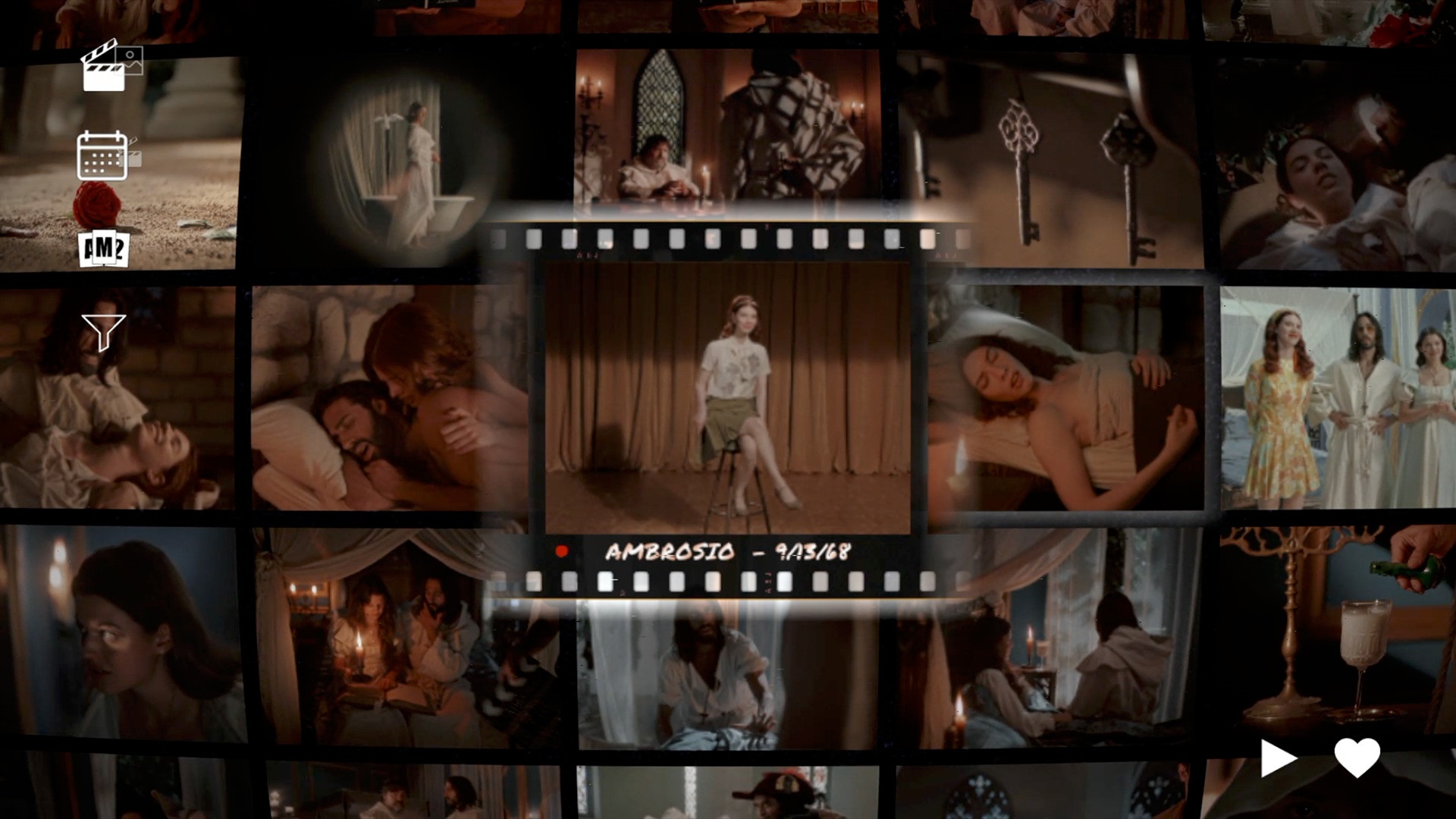
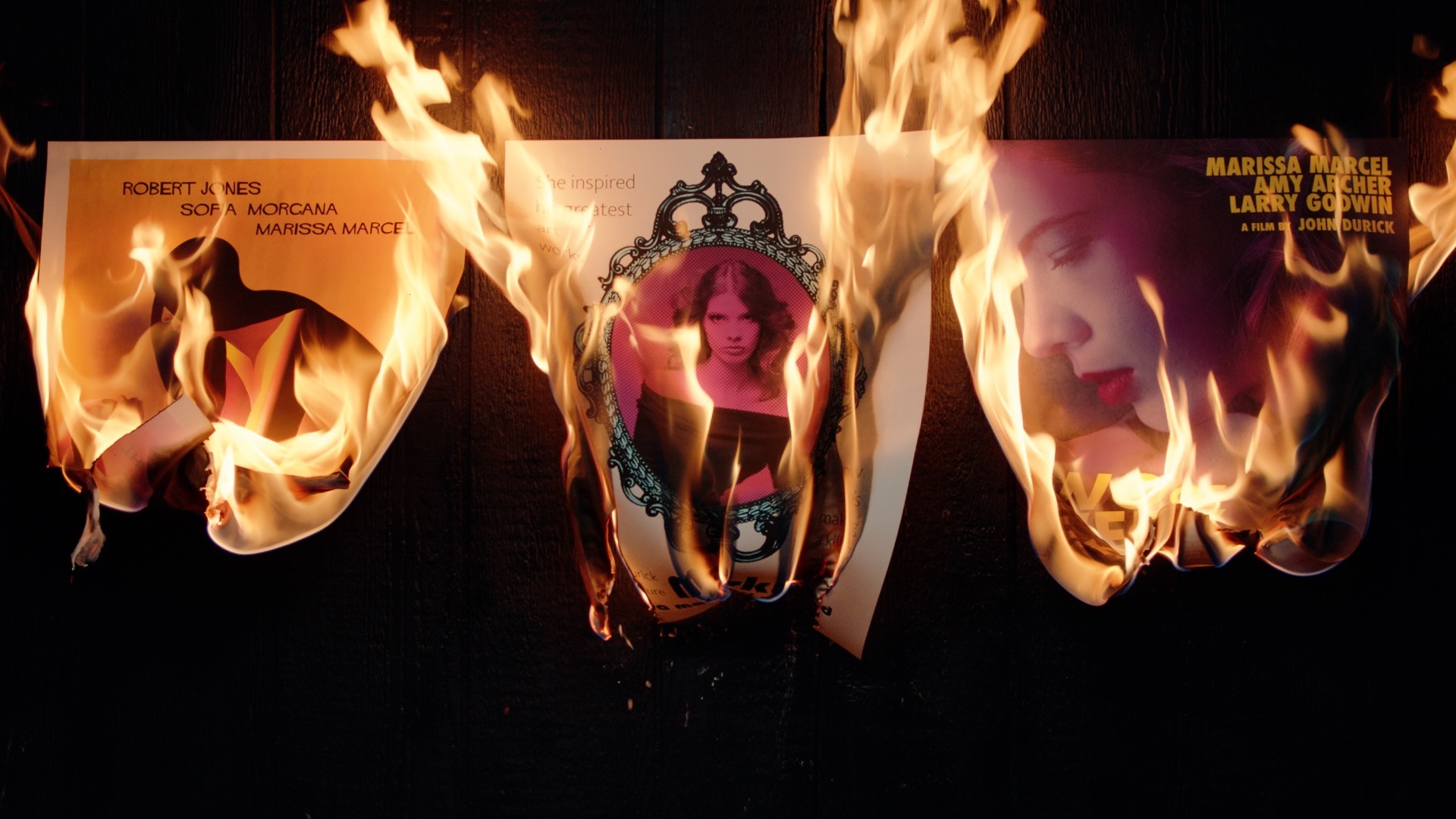
What did we make of this movie editing nightmare at launch? In our Immortality review, we called it "one beautiful headf*ck"
"The interesting thing with classic films noir is these are actually juicy roles for actresses," Barlow begins, "where they get to actually have sexual agency, they get to actually drive the plot, they get to win and they get to be bad and intelligent […] But, to counter that, is the fact that the femme fatale is also still essentially a sexy trope for the benefit of the male audience. There's all this complexity baked into the femme fatale characters [so we thought], 'Okay, that's interesting – let's echo that through [Marissa's] three movies.'"
After Ambrosio, 1970's Minsky is Marissa's attempt to make the femme fatale character "more real," through a plot that sees an artist's subject fight for ownership of her own story, often with bloody consequences in and around the frame. Half Mermaid "watched every erotic thriller going," as Barlow pitches the genre as "an evolution" of the noir films that came before. He goes on to argue that, "If the setup [of an erotic thriller] is like 'I'm attracted to and sleeping with this person that might be a killer,' […] the ones that were more satisfying were the ones where yes, that person was the killer."
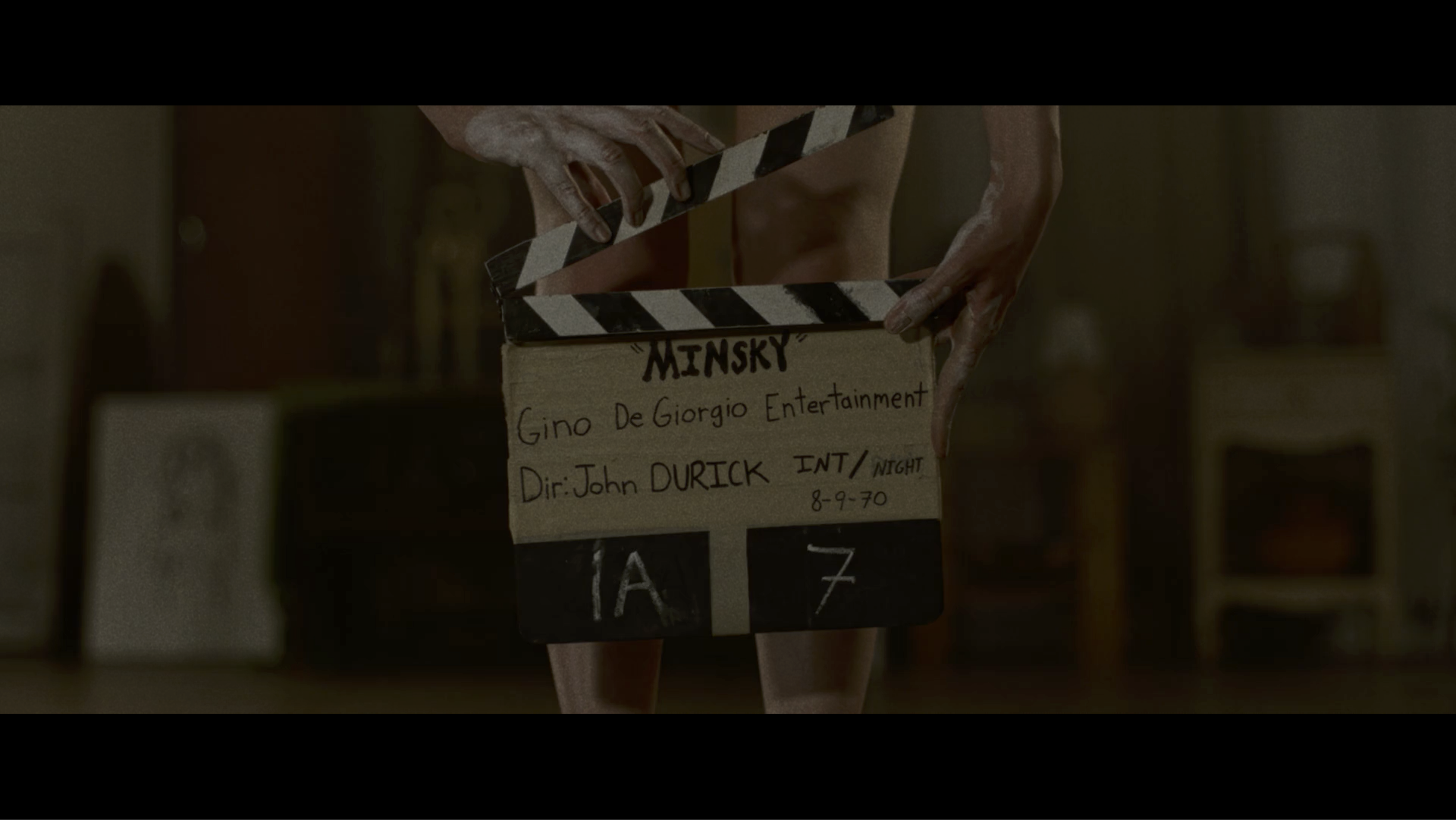
Barlow likens designing Immortality to designing a metroidvania; you visit the same locations repeatedly, the space transformed and recontextualised each time you return with a new power-up. In Immortality's case, clips within clips, fiction within fiction, and dual roles within dual roles peel away the mystery.
"We gave ourselves the responsibility to make sure that every clip you can find has multiple uses and meanings and ways of connecting with other clips," Barlow says, "And then we'd get to the insert shots."
As Barlow avoids cleanly establishing master shots, you have to piece the story together through table reads, close-ups, and location scouting. This elucidates a bit of movie-making magic while also developing Marissa's own arc towards becoming a creative force in her own right. For one example, an insert shot from Minsky focusses on a hand stubbing out a cigarette.
"Often, when you do an insert shot on hands, it's not actually the principal actor because they're back getting their makeup done; you don't have them hanging around on set just so they can put their hand into shots," Barlow explains. "So often there is somebody else's hand just being used. I know that Rian Johnson did this on his Star Wars movies – all the inserts of Luke Skywalker's hand are his hand."
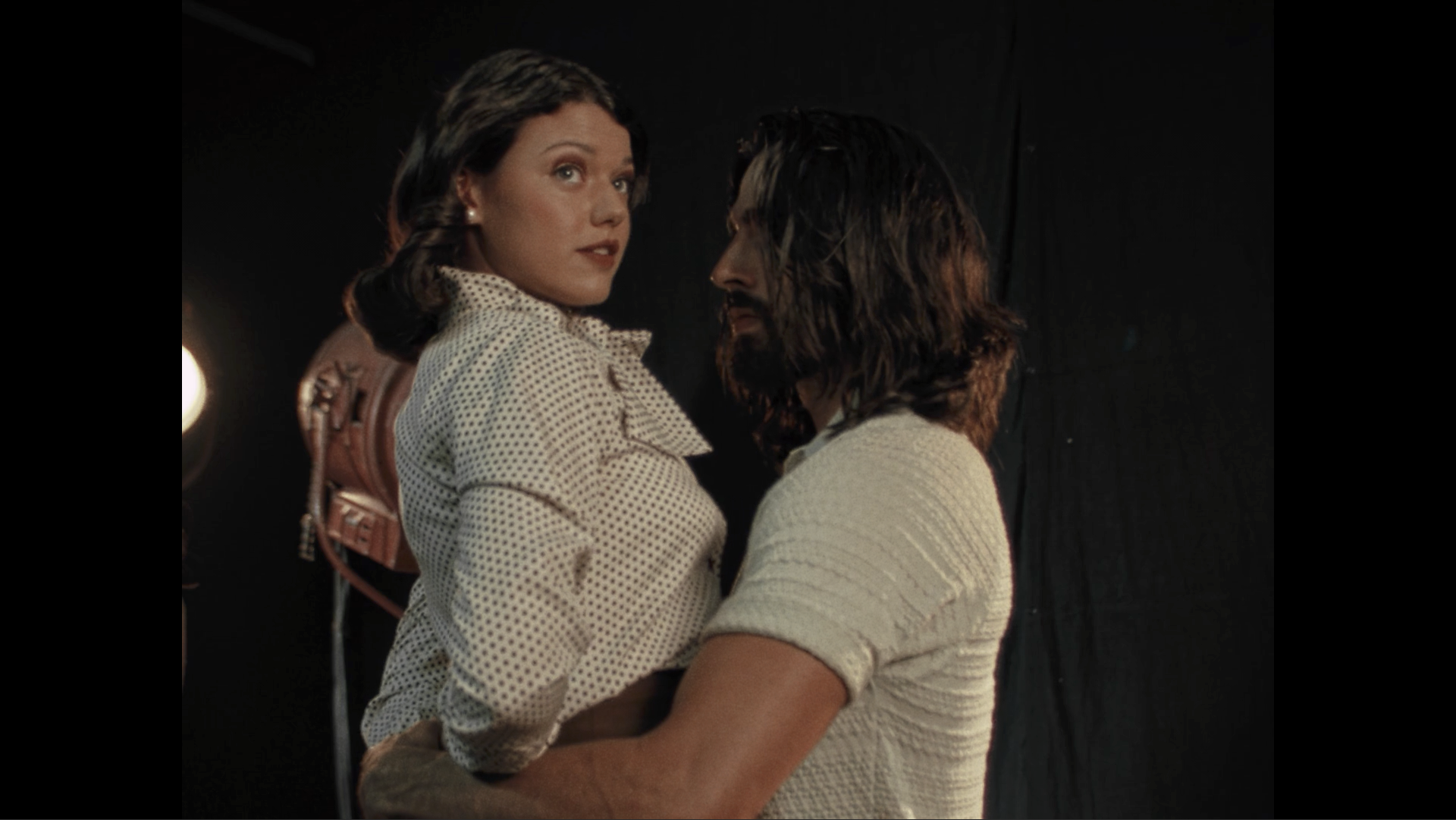

Sam Barlow began his clip-wrangling genre back in 2015. Read about it in the making of Her Story!
In Immortality, a voice off camera asks if that's how the film's male lead would stub out a cigarette. The prickly voice of fictitious director John Durick snaps, "It is now." If you don't already know what happened to Minsky's lead actor, you're immediately intrigued, and if you do, that's still only one layer of the mystery.
After a terrible accident on set kills her co-star, Marissa disappears from public life. She re-emerges to play a double role in 1999's Two Of Everything. Playing the lead roles of both a pop star and her body double, Marissa becomes both investigator and murder victim. In one pivotal clip, a staged drowning very nearly becomes a real one. Everything before this point has just been the flyleaf to all of Immortality's layers.
What binds it all together is genre. Screenwriter and film producer Allan Scott worked with Half Mermaid on the script for Minsky, sharing wisdom from frequent collaborator Nicolas Roeg. The perhaps best-known Scott and Roeg collaboration is 1973 thriller Don't Look Now, another layered picture that hinges on an inciting incident of watery death.
Barlow paraphrases, "The idea was, if you want to say something really deep and meaningful, you shouldn't go and make a deep and meaningful movie – won't work. You can use genre as a way of kind of injecting the deep meanings into the bloodstream, as a way of getting the audience in and exploring much deeper themes. But having the framework of it being a genre piece, actually, is more powerful."
Darker than black
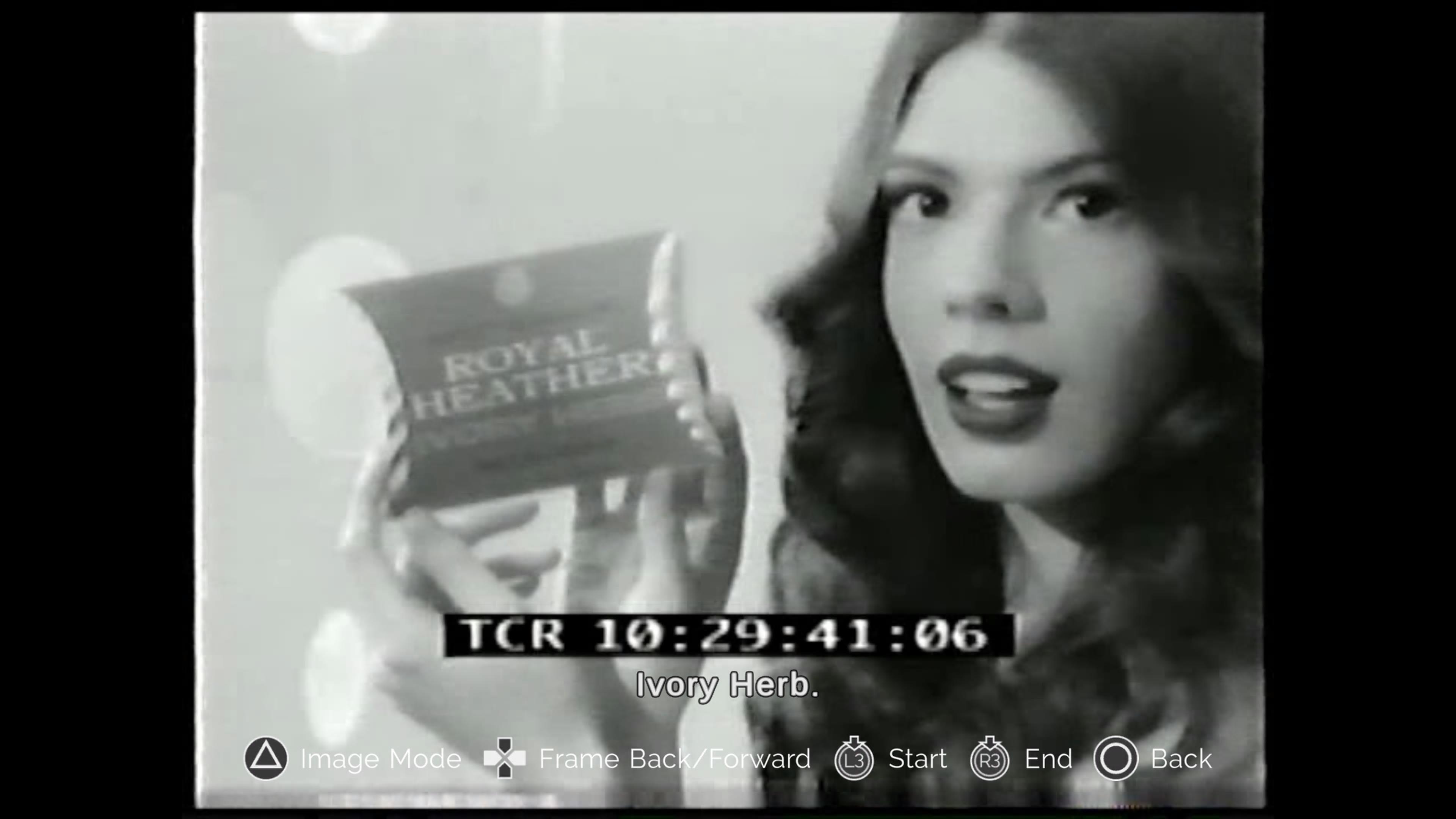
Noir stories are about more than detectives and dames, exploring all that lingers along the shadowy edges of morality. For another example of all the vehicle of genre fiction can achieve, take Anne Rice's Interview With The Vampire. Ostensibly genre fiction about charming bloodsuckers who, in every sense, simply will not die, the book draws heavily on conventions of literary fiction for its exploration of grief. First published in 1976 (yes, really), its appeal has endured for almost half a century.
You know exactly where this feature is going – it's time to talk about Immortality's shape-shifting, time-travelling vampires. Surprise! 'Marissa Marcel' left the building decades before a single frame of Ambrosio was shot, replaced by an entity that devoured her and now wears her face. Introduced to the player as The One and The Other, this undying pair are referred to as 'Proteans' in the script, and the word 'vampire' is tellingly never uttered.
"When we put out the original press kit […] our little embargo thing was like, […] 'Please don't use the V-word,'" Barlow tells us, "And we got a couple of people being like, 'I don't want to sound stupid, and maybe I've missed something. But what is the V-word? Like, is it the Virgin Mary?' I was like, 'Okay, if the V-word isn't in your head, you're fine.'"

"Do we create art to have something that lives beyond us?"
Dissatisfied with certain well-worn tropes, Immortality's is a deliberately less explicit take. Barlow quips, "If this character has been alive for 10,000 years, would they really be just a reskinned badass goth?"
Vampires were always the unbeating heart of the project, and the bloodline goes back further than you may think. Barlow explains, "Part of the genesis of Immortality was the three years I spent making a Legacy Of Kain game that got cancelled."
Legacy Of Kain: Dead Sun began development at the same time the often-denigrated young adult Twilight book series was enjoying the peak of its popularity, so the team did a lot of research into how to take their vampires in a fresh direction. Years later, when it came time to move on from the real-world horror that had inspired Telling Lies, Barlow's research bubbled back up.
"This was in some of the Legacy Of Kain stuff as well – it was like the idea of immortality projects, the idea of 'Do we create art to have something that lives beyond us?'" Barlow says, "And so then, across the game, we were consciously coming up with different answers to the question of how do we deal with our mortality."
Barlow pored over Karen Blixen's short stories Echoes and The Dreamers, as well as The Vampire Tapestry by Suzy McKee Charnas, but it was an interview with a young Olivia Hussey from the BFI's archives that ignited the spark.
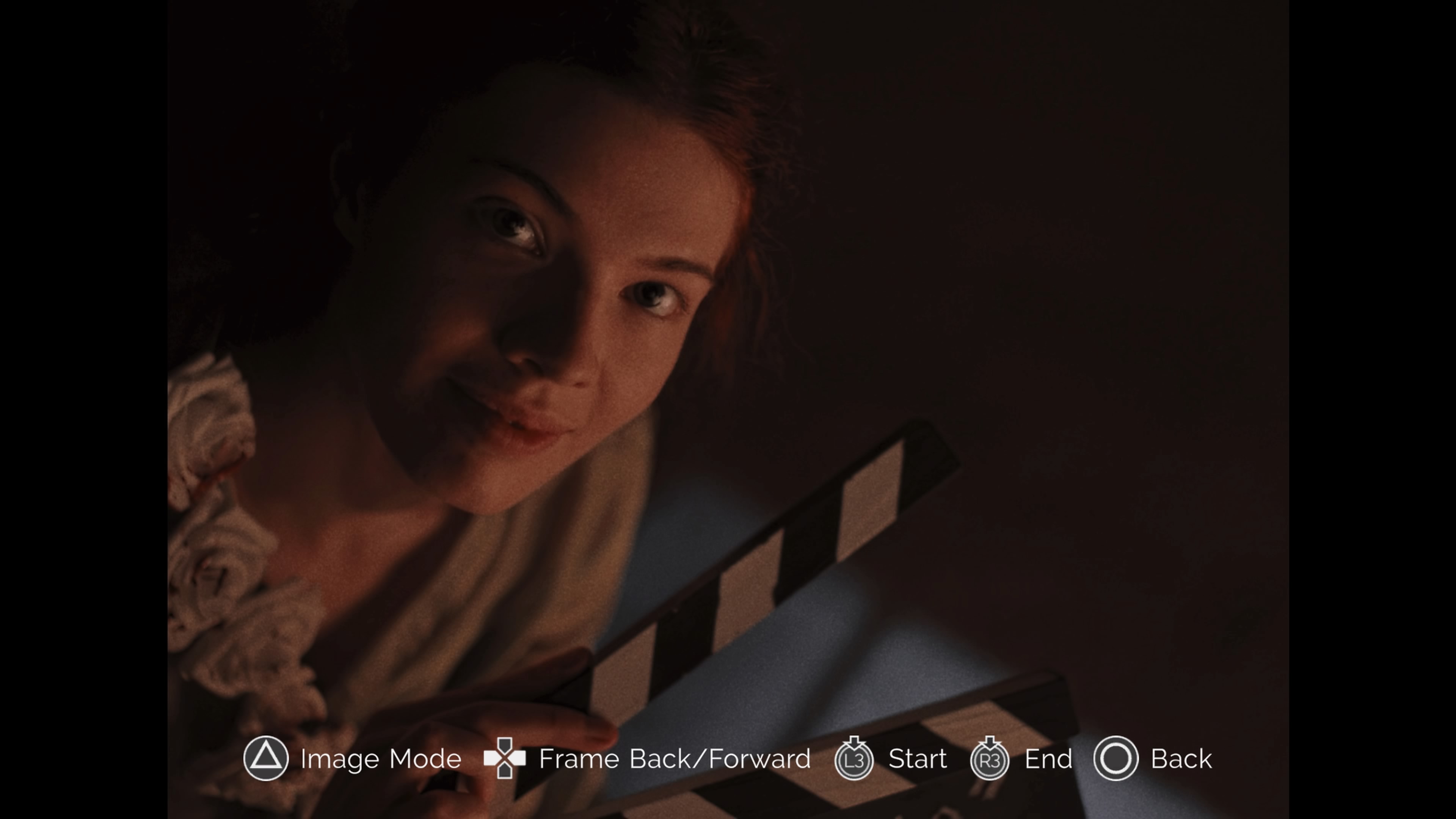
Promoting Franco Zeffirelli's film adaptation of Romeo And Juliet – infamous for its nude scenes with underage actors – there's a particular moment in the 1967 interview that stands out for Barlow:
"At some point the interviewer, who's very BBC, is like, 'Oh Olivia, I couldn't help but notice that you're smoking a cigarette. There can't be many 14-year-olds that smoke cigarettes,' or something. And she gives him this incredible look that is this kind of withering, 'Dude, you have no idea what fucking teenage girls get up to.'"
Barlow later goes on to elaborate, "Jean Seburg being cast by Otto Preminger, Olivia Hussey being cast by Zeffirelli – like you have these dudes wielding huge amounts of power, seeing these young women as putty […] and just seeing this little spark of incredible badassery from Olivia Hussey – I think, just in my head, it was like, 'What if actually behind the eyes, she is an immortal vampire that can rip this guy's fucking throat out?' Like, that was this very simple wish-fulfilment thing of like, 'Oh, that would be an interesting layer!'"
Today, Olivia Hussey is an actress in her 70s. Over her decades-long career, she's been repeatedly asked about playing Juliet, and her experience of shooting nude scenes at such a young age. Her answer has evolved over the years, though in 2022 she and her co-star Leonard Whiting filed a lawsuit against Paramount Pictures, seeking damages on grounds including 'sexual abuse' and 'sexual harassment.' It may not be ripping someone's throat out, but it is something approximating justice in the real world, away from the immortal silver screen.
This feature originally appeared in PLAY Magazine – which printed its final issue in 2024. Want to see what's showing next? Take a look at our upcoming games list to check what to add to your calendar next!







